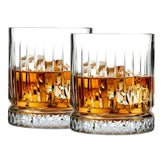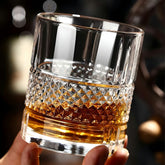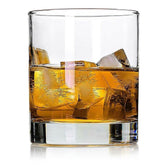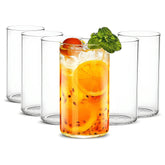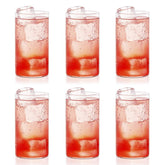The Journey of Drinkware: From Ancient Origins to Contemporary Designs
Drinkware, a staple in our daily lives, serves a fundamental purpose while also reflecting cultural and technological advancements. From the rudimentary vessels of ancient times to the sophisticated and sustainable designs of today, drinkware has undergone a remarkable transformation. Let's take a journey through the history and evolution of drinkware, exploring how it has adapted and evolved over the centuries.
Ancient Beginnings
In ancient times, drinkware was crafted from readily available materials. Early humans used hollowed-out gourds, shells, and animal horns as rudimentary vessels. These natural containers were later replaced by more durable and crafted materials as civilizations advanced.
Mesopotamian Innovations
Mesopotamians were among the first to make significant advancements in drinkware. They developed pottery and ceramics, which allowed for more intricate and durable designs. Decorative elements such as carvings and paintings were common, reflecting the artistic capabilities of the time.
Egyptian Elegance
The Egyptians revolutionized drinkware with their glass-making techniques. They created beautiful and intricate glass vessels that were not only functional but also symbolic. Glass drinkware often featured motifs and colors that held cultural and religious significance.
Greek and Roman Contributions
Greek and Roman societies introduced the use of metals like silver and gold in drinkware. These materials allowed for more durable and ornate designs. They also introduced various shapes and styles, including the iconic kylix and amphora, which have influenced drinkware design to this day.
Medieval European Drinkware
During the medieval period, drinkware saw a shift towards the use of metal and wood. Pewter and wooden goblets became common, and the influence of the church led to the creation of chalices used in religious ceremonies. The designs were often simple but functional, reflecting the austere lifestyle of the time.
Renaissance Revival
The Renaissance brought a revival in artistic expression, and this extended to drinkware. Glass and crystal became popular, with artisans creating elaborate and decorative pieces. The introduction of lead crystal in particular allowed for the creation of clearer and more ornate drinkware.
Asian Influence
Asia, particularly China, made significant contributions to the world of drinkware with the development of porcelain. Fine china became highly sought after, and the intricate designs reflected the rich cultural heritage of the region. The tea culture in China and Japan also led to the creation of specialized tea sets that are still popular today.
Colonial and Early American Drinkware
In colonial and early American times, drinkware designs were more practical and straightforward. Earthenware and glass were commonly used, and the advent of mass production made drinkware more accessible. The designs were simple, reflecting the practical needs of the settlers.
Industrial Revolution Impact
The Industrial Revolution brought about significant changes in drinkware production. Advances in manufacturing allowed for the mass production of standardized designs. New materials like stainless steel and Pyrex emerged, offering greater durability and versatility.
20th Century Innovations
The 20th century saw the introduction of new materials like plastic, which revolutionized drinkware. The rise of branded drinkware, including collectible glasses and promotional items, also became popular. Innovations in design and functionality continued to evolve, reflecting the changing lifestyles of the time.
Modern Day Drinkware
Today's drinkware focuses on sustainability and technological advancements. Materials like bamboo and recycled glass are becoming more popular, reflecting a growing concern for the environment. Innovations such as insulated tumblers and smart drinkware that tracks hydration are also gaining popularity.
Cultural Significance
Drinkware has always held cultural significance, playing a role in ceremonies and traditions. From the wine goblets of ancient Rome to the tea cups of Japan, drinkware is often intertwined with cultural practices. Pop culture has also influenced drinkware, with themed mugs and glasses becoming popular collectibles.
Future of Drinkware
The future of drinkware is likely to see further advancements in sustainability and technology. Biodegradable materials and smart drinkware with enhanced functionalities are just a few trends on the horizon. As lifestyles continue to evolve, so too will the designs and uses of drinkware.
The evolution of drinkware from ancient times to the modern day is a testament to human ingenuity and cultural diversity. From simple natural containers to sophisticated and sustainable designs, drinkware has continually adapted to meet the needs and preferences of society. As we look to the future, drinkware will undoubtedly continue to evolve, reflecting the ongoing advancements in technology and sustainability.
FAQs
What were the earliest materials used for drinkware?
The earliest drinkware was made from natural materials such as gourds, shells, and animal horns. These were later replaced by pottery, ceramics, and metals as civilizations advanced.
How did ancient civilizations influence modern drinkware?
Ancient civilizations like the Mesopotamians, Egyptians, Greeks, and Romans introduced various materials and designs that have influenced modern drinkware. Techniques such as glass-making and metalwork laid the foundation for contemporary designs.
What innovations did the Industrial Revolution bring to drinkware?
The Industrial Revolution introduced mass production, allowing for standardized and widely accessible drinkware. New materials like stainless steel and Pyrex emerged, offering greater durability and versatility.
How is sustainability affecting modern drinkware?
Sustainability is a major focus in modern drinkware, with increasing use of materials like bamboo, recycled glass, and biodegradable plastics. Innovations also include eco-friendly manufacturing processes and reusable designs.
What are the future trends in drinkware?
Future trends in drinkware include the use of biodegradable materials, smart drinkware with enhanced functionalities, and continued advancements in sustainability. Emerging technologies and changing lifestyles will drive these innovations.

